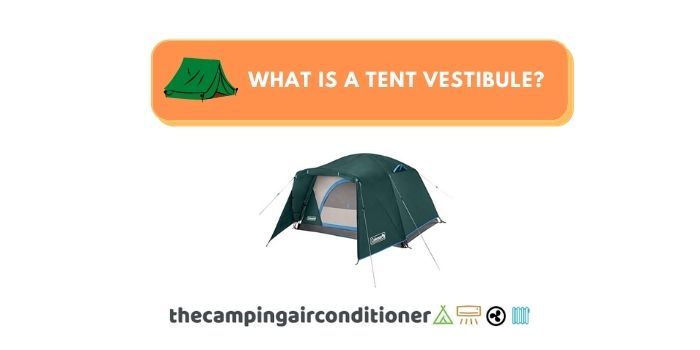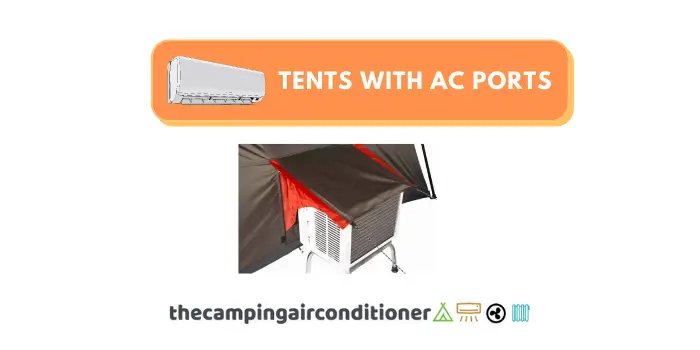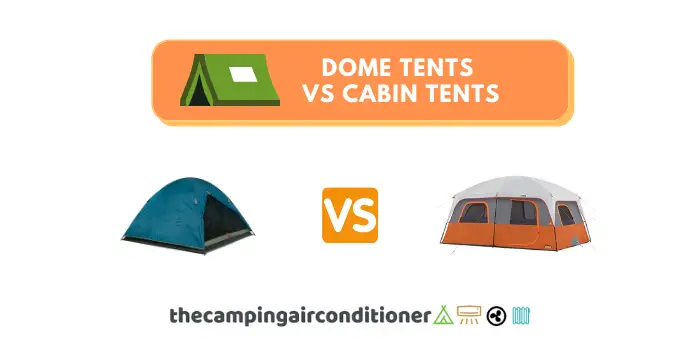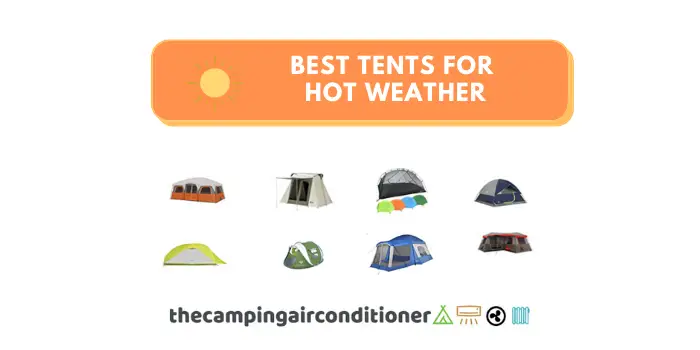A tent vestibule is a covered and protected area found in the tent’s front or on its side (similar to a porch or a small canopy). Usually, it serves as an external area for gear storage and many campers also use them as their cooking area (given plenty of air circulation and minimal risks of CO poisoning of using a camping stove in a tent) or even as an external room to socialise.
When camping in rainy and wet conditions, many campers place a mat on it to clean their shoes/boots and leave dirt and wet gear outside their tent. Some of these models also come with a screened room, preventing mosquitos and insects from coming into your tent.

What are the types of tent vestibules?
Overall, there are two major types of tent vestibules: front/rear and side/lateral vestibules.
Many tents already have a vestibule incorporated into their structure, such as Coleman Skydome Tent with Full Fly Vestibule. But there are also add-on options, which you can use to expand your tent’s area.
Front and Rear Vestibules
Front and rear vestibules, as the name says, are covered areas in the front of the back of the tents. Usually, the rear vestibules are screen room areas, which provide ventilation and extra storage.
Front vestibules are mostly open and can have considerable dimensions, providing enough space to set your outdoor kitchen and dining area, use it as an area for rest and socialise, and store gear.
Wenzel Klondike 8 Person (w/ screen room) is an excellent option if you need an external area with screen protection (be mindful of fire hazard risks if you plan to cook in this area, though.)
They can also serve as a shelter on rainy days if you don’t want to be inside your tent and serve as a “mudroom” to clean your dirty shoes and boots before entering your shelter.
Lateral Vestibules
Side vestibules extend from either side of the tent. Some tents come with or can accommodate two vestibules. This option typically provides more room and allows you to use one for extra storage and the other as a door.
You can also find tents with side vestibules (either on one side or both sides). They usually are thinner and smaller than the frontal options, given their narrowness. However, some models come with lateral sheltered areas as big as front vestibules.
Add-on Vestibules
Some tents do not come with vestibules facilitating assembling, transportation, and making them lighter. If you have one of these tents and wondering whether you need to spend some money for a new model with an external sheltered area, you might find an add-on vestibule option to your tent.
The challenge here will be finding an option that can properly connect to your tent structure – it might be difficult. Some manufactures, like Eureka, produce add-on models for specific tents (i.e. Eureka! Add-On Vestibule Mini Room for Timberline Tents).
If you cannot find it, we recommend using a pop awning, such as Pop Up Canopy Tent, which is easy to carry around and is foldable, fitting anywhere.
DIY tent vestibule - Can I make one?
Yes, you can. Many experienced campers use tent tarps as a vestibule that provides enough space to meet their needs. The Forceatt 12X14FT Tarp comes with 2 Poles is lightweight and easy to assemble, and can be easily used as a vestibule.
Alternatively, you can buy yourself poles, tarp, pegs, and ropes, build them in your preferred dimensions, and place them wherever you want – be careful in windy conditions, though.
Should you have a tent vestibule?
Well, you can successfully go camping without a tent vestibule.
However, they might be extremely helpful when you have plenty of camping gear to store, would like to have a covered and protected area for cooking or the weather forecast shows potential rainstorms for you campsite (in this case, it might be worth checking whether your tent is waterproof – we detail how to check whether your tent is waterproof this on this article).
On the other hand, a tent vestibule might add a layer of complexity to pitching your tent, might affect its stability (a tent might become non-freestanding), especially in windy conditions, and add extra weight.
Overall, we firmly believe that the advantage outweighs the drawbacks when camping in large groups and for a couple of days, which means you might need extra space.
If you are a hiker, backpacker or a solo camper, the extra weight and extra steps to pitch your tent might not be worth it.
Conclusion
Tent vestibules are an excellent option for campers in need of extra space for:
- Store extra camping gear
- Have a protected area for cooking
- Have an external shelter for socialising and making their meals
- Prevent mosquitos and insects from coming into your tent (screened versions)
If you are camping in a group or intend to stay for an extended period camping, they might be crucial to help you in your outdoor adventure.







